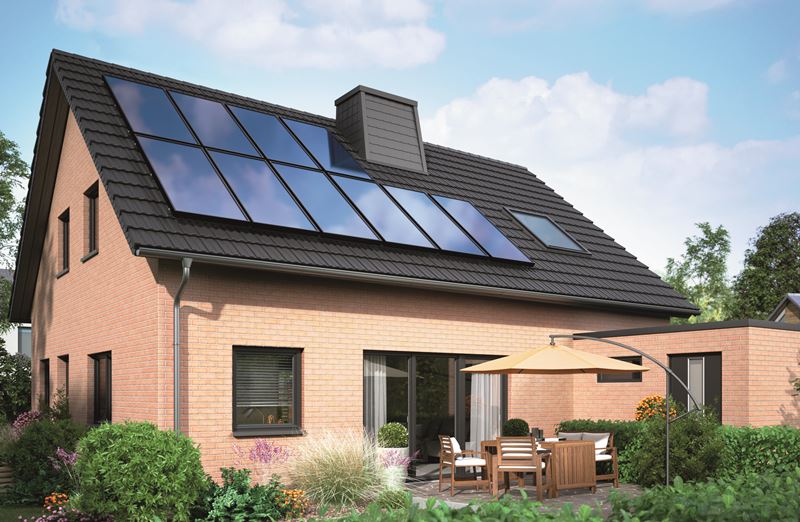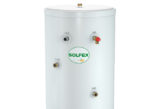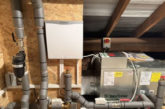
Christian Engelke, Technical Director, Viessmann argues that we need to move from low carbon heating to low carbon households.
It’s tempting for consumers and the industry to think about low carbon heating in terms of: what will replace the gas or oil boiler while doing more or less the same job? Going down this path leads us to the mainstream media headlines we commonly see today that directly compare the performance and cost of boilers and heat pumps. In many circumstances, particularly for existing properties, this apples versus pears assessment of the boiler replacement scenario sees the heat pump lose out.
We’re thinking about this all wrong and as an industry, we’re often getting drawn into the wrong debate. We should not be thinking about low carbon heating, but low carbon households where the prize is much bigger, in terms of both the environment and cost.
Top on the home improvement agenda for UK homeowners should be the question: how can I start building up a low-carbon heat and power ecosystem for my living and mobility needs?
Solar PV
Solar power plays a central role for this revised vision of energy in the home. It requires changing the way we think of PV. Most PV systems are set up to export a large proportion of the (unused) generated power to the grid, whereas, in fact the aim should be to use as much as possible – ideally all of it – within the household. Making it and keeping it to oneself covers the increasing consumption of electricity within our homes and protects against volatile, high electricity prices. Solar PV has never been so important.
We must also think about the management of power for heat in the context of other electrical demands and appliances. For example, if PV is combined with battery storage and an energy optimisation system, a gas boiler can be replaced by a heat pump to cover the heat demand, saving the gas energy used for heating completely and with only a minimal increase in electric consumption (<10%).
For the electric demand for a residential home with both a heat pump and electric vehicle, adding solar PV and battery storage together with an energy management system can reduce electrical demand by around one third by increasing the amount of self-produced energy being used. When you consider that around 90% of the value of electricity is lost if it’s exported, as the sale price is typically around a tenth of the purchase tariff, it’s clear why this matters.
Modular approach
Not everyone has the budget to install everything at once, and that can be a real barrier. Viessmann has devised a solution to these dilemmas that will make switching to renewable energy much easier, adding as budget and headspace allows. The Viessmann Energy Management System which is integral to the products’ One Base controls, allows a modular package approach to Viessmann’s heat-and-power-generating appliances to make installing, operating and optimising an autonomous system streamlined and simple.
Homeowners can start with PV panels as a first step on the road to self-sufficiency and add additional elements such as storage, heating and vehicle charging over time. Alternatively, if they already have a heat pump, it’s simple to add PV to eradicate running costs.
Financial benefits
A 4 kWp Vitovolt 300 PV system generates around 3,800 kWh/year – well over the typical UK four-person household consumption level of 2,900 kWh. Around 30% of this will be used within the home, saving approximately £422/year at 30p/kWh. Adding a battery increases household usage to 50%, giving annual savings of £627. With an electric vehicle and heat pump in the mix, nearly 100% will be used, saving £1,140/year and enabling fully renewable self-sufficiency for heat, power, hot water and transport.
To obtain these kinds of savings, however, it’s essential to have an energy management system that coordinates and optimises the entire ecosystem, improving efficiency and comfort while reducing costs and emissions. But finding software that can integrate with multiple appliances from different manufacturers is not always easy and can add extra complexity and costs.
All appliances with Viessmann’s One Base platform have Viessmann’s ‘Energy Management Inside’, a free energy-optimisation system which is easily connected to the user-friendly ViCare app for homeowners and the installer app ViGuide for remote monitoring and diagnostics.
Together, these innovations allow homeowners to build a self-reliant renewable system at their own pace, secure in the knowledge it will all integrate seamlessly and work together optimally.
Energy Management
Another important role for the sophisticated energy management software, when connected to solar PV and heat pump, is managing the operation of the heat pump so that its power consumption is optimised and subsequently reduced, contributing to a more efficient, low-carbon heating and household system.
Where there is no power optimisation of the PV, the heat pump simply generates heat when needed by the household. This demand usually comes outside of the PV generation cycle meaning the battery uses up all its stored power as soon as the heat pump kicks in. With PV optimisation controls such as those included in the Viessmann Energy Management System, the heat pump operation is shifted to work in time with PV generation, while managing the storage of heat via a buffer and/or DHW cylinder. The battery is then able to supply energy outside the PV generation to contribute to the overall system efficiency savings outlined in the scenarios above.
Main Image: Viessmann Vitovolt 300 solar PV array












